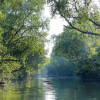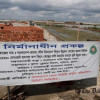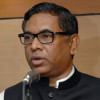Heritage in Danger: Unesco to put Sundarbans on the list

The World Heritage Centre of Unesco has decided to put the Sundarbans on the list of World Heritage in Danger.
The centre decided this last week as it was not happy with Rampal power plant and other development projects being implemented in the southwest region where the mangrove forest is located.
The centre also requested the government to invite its mission to prepare a set of corrective measures to secure the Sundarbans from any potential environmental danger.
The World Heritage Centre, which enlisted the Sundarbans as natural heritage in 1997, has been raising objections about the power plant since the government took the initiative of constructing it at the edge of the forest.
Although the government has always claimed that the power plant would not pose any threat to the Sundarbans, the Unesco and environmentalist groups were never convinced.
In 2017, a government delegation attended the 41th meeting of the Unesco World Heritage Committee to discuss the issue.
The Unesco in a document last week mentioned that the government did not make enough progress in undertaking a Structural Environment Assessment (SEA) on the region to ascertain potential dangers facing the Sundarbans.
Rather, the government allowed construction of two additional power plants on the Payra river and numerous other industrial projects in the periphery of the Sundarbans.
The authorities are also dredging the Payra, which could pose another threat to the forest, says the Unesco document. Following a series of correspondence between the government and World Heritage committee, the Unesco came to the conclusion that “little progress has been achieved to address the significant threats to the property”.
“Despite the committee’s requests, no serious consideration was given to possible alternatives to the construction of the Rampal power plant, and its construction is progressing...
“All taking place in the absence of the SEA.
“It is regrettable that the National Oil Spill and Chemical Contingency Plan (NOSCOP) has still not been finalised, and that no details on financial and human resource allocation have been provided for its implementation.”
The Unesco committee sent the government a letter requesting it to submit to the World Heritage Centre by February 1 next year an updated report on the state of conservation of the property for examination by the World Heritage Committee at its 44th session in 2020.

 For all latest news, follow The Daily Star's Google News channel.
For all latest news, follow The Daily Star's Google News channel. 






Comments